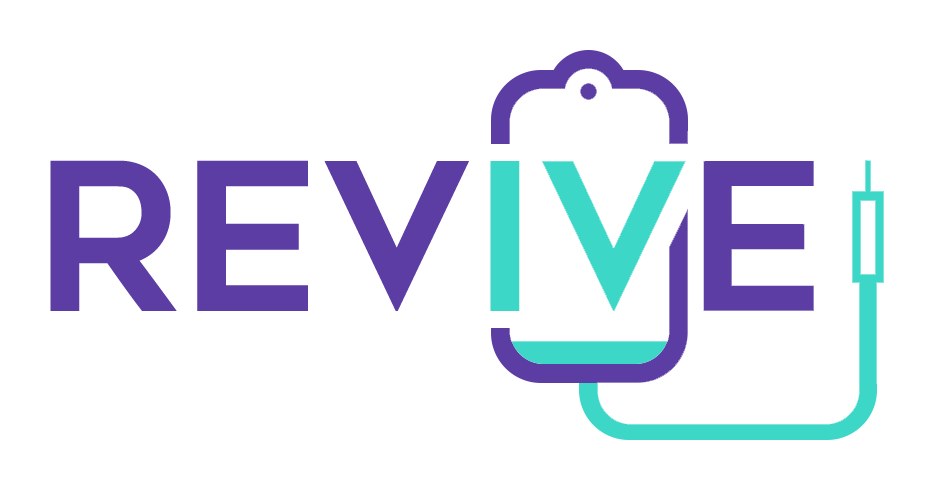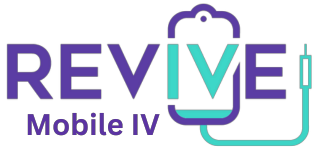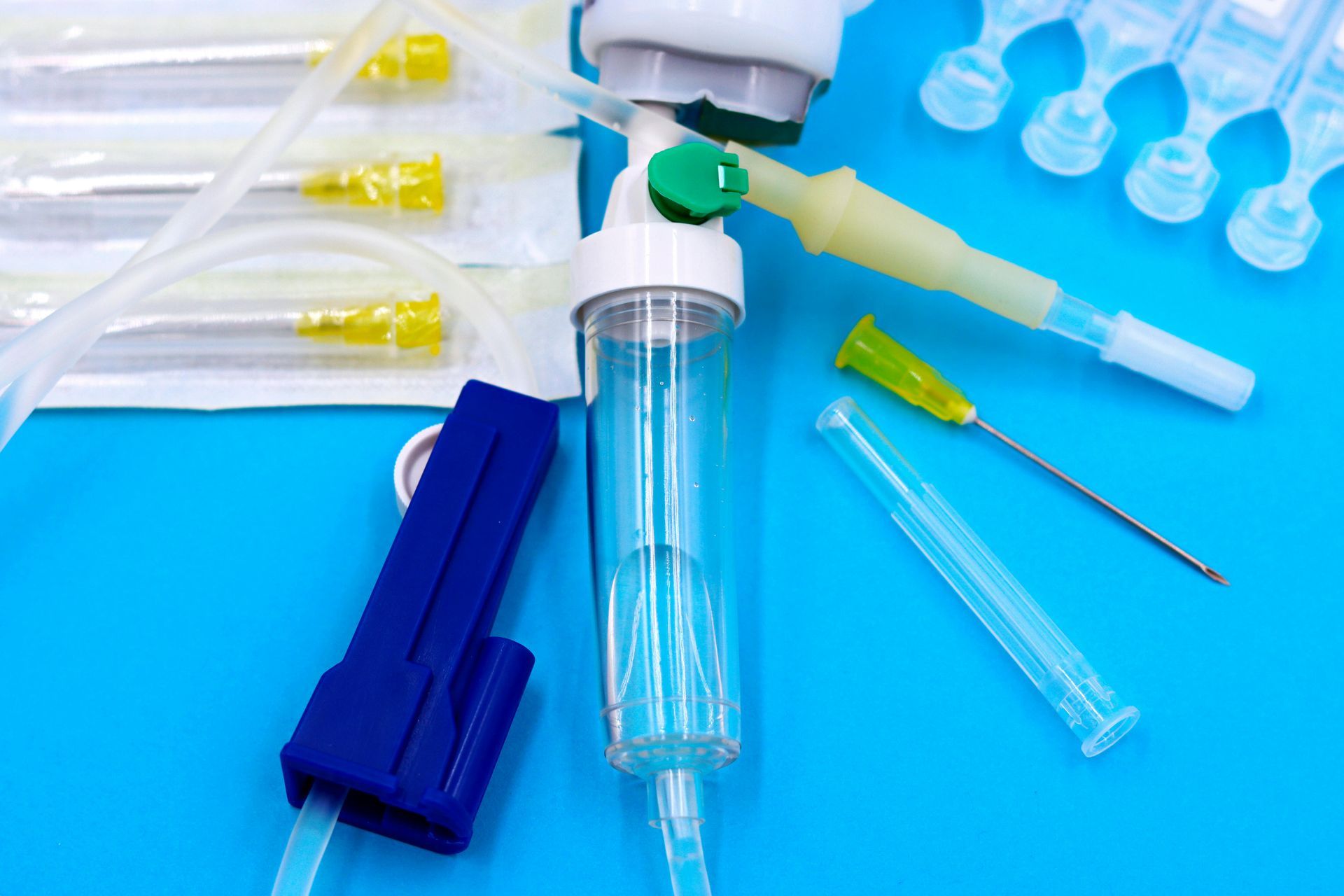Drip, Drip, Hooray! Understanding IV Therapy for POTS Syndrome
Understanding the POTS Hydration Challenge

IV therapy for POTS(Postural Orthostatic Tachycardia Syndrome) is a treatment approach that delivers fluids, electrolytes, and sometimes nutrients directly into the bloodstream to help manage symptoms. Here's what you need to know:
- What it is: Intravenous delivery of normal saline (0.9% sodium chloride) to expand blood volume
- Why it works: POTS patients often have 10-13% lower blood volume than normal
- Benefits: Reduces heart rate, dizziness, fatigue, and brain fog; improves quality of life
- When it's used: After oral hydration, salt loading, and medications have proven insufficient
- Protocol: Typically 1-1.5L of saline infused over 1-2 hours, every 7-14 days
- Evidence: Studies show 79-93% of patients report symptom improvement with intermittent infusions
POTS creates a challenging cycle: standing up causes blood to pool in the lower body, reducing the amount returning to your heart. Your heart races to compensate, but without enough blood volume, symptoms persist. IV therapy breaks this cycle by rapidly restoring fluid balance.
I'm Kylee Heck, co-founder of RevIVe Mobile IV, and I've personally overseen hundreds of IV therapy for POTS sessions, helping patients manage their symptoms in the comfort of their homes. Our physician-led approach ensures safe, effective treatment delivered by experienced nurses.

Why POTS Patients Struggle With Blood Volume
If you've ever wondered why simply drinking more water doesn't solve POTS symptoms, you're asking exactly the right question. POTS isn't just about being dehydrated—it's a fundamental disorder of how your body regulates blood volume. Research reveals that POTS patients typically have about 13% less plasma volume than they should, with some cases showing deficits as high as 27%.
This chronic low blood volume stems from several complex factors working against you:
Your autonomic nervous system (the part that should automatically regulate things like blood vessel constriction) isn't performing its job properly. When you stand up, your blood vessels should tighten to help push blood back up to your heart—but in POTS, this mechanism falters.
There's also what doctors call the "renin-aldosterone paradox." Despite having too little blood volume, your body paradoxically produces low levels of the very hormones (renin and aldosterone) that should increase to help you retain salt and water. It's like your body's water conservation system is broken exactly when you need it most.
For many patients (up to 69%), digestive issues compound the problem. GI disorders common in POTS can prevent proper absorption of fluids and electrolytes from food and drinks, making oral hydration less effective than it should be.
To make matters worse, the liftd norepinephrine (adrenaline) levels typical in POTS can trigger excessive urination, creating a frustrating situation where your body eliminates fluid you desperately need to retain.
This persistent low blood volume creates a vicious daily cycle: your body detects reduced blood return to your heart when standing, your heart races to compensate, but without enough blood volume, symptoms persist or worsen as the day goes on.
Standing Up Is Half the Battle
For most people, standing up requires zero thought. For someone with POTS, it can trigger an avalanche of symptoms within minutes:
Dizziness that makes you grab the nearest wall. Heart palpitations that pound in your chest. Visual changes like seeing spots or tunnel vision. Brain fog that makes simple tasks suddenly confusing. Fatigue that feels like gravity has doubled. Nausea that comes out of nowhere. Headaches that throb with each heartbeat.
These symptoms aren't just uncomfortable—they're the result of orthostatic intolerance, your body's inability to maintain stable blood pressure and adequate blood flow to your brain when you change positions. By definition, POTS involves a heart rate increase of at least 30 beats per minute (or ≥40 bpm in those under 20) within 10 minutes of standing, without a significant drop in blood pressure.
The impact on daily life can be devastating. Quality of life scores (measured by tools like the Orthostatic Hypotension Questionnaire and SF-36) show that POTS patients often experience limitations comparable to those with chronic heart failure or kidney failure requiring dialysis—yet POTS remains far less recognized.

IV Therapy for POTS: Mechanisms, Protocols & Efficacy
When you're dealing with POTS, sometimes your body needs a direct approach. That's where IV therapy for POTS comes in – delivering what your body needs, right where it needs it.
Think of it as a highway bypass around a traffic jam. Instead of hoping fluids make it through your digestive system, IV therapy delivers hydration directly to your bloodstream through four key mechanisms:
First, it immediately expands your blood volume – something your body is desperately seeking. The saline solution (with 9g of salt per liter) helps your body hold onto that precious fluid rather than quickly eliminating it. This improved volume means your heart can pump more efficiently without racing, and better blood flow reaches all your tissues – including your brain, which explains why many patients report that mental fog lifting after an infusion.
The science backs this up. Research published in the Journal of Interventional Cardiac Electrophysiology found that 93% of POTS patients experienced significant improvement with intermittent saline infusions. Their Orthostatic Hypotension Questionnaire scores improved by 3.1 points – representing real, meaningful symptom relief.
While normal saline (0.9% sodium chloride) is the standard, some doctors are exploring balanced solutions like Ringer's lactate that more closely match your body's natural chemistry. A major New England Journal of Medicine study showed balanced solutions might be gentler on the kidneys, though we still need POTS-specific research.
| Parameter | IV Saline | Oral Salt/Fluid |
|---|---|---|
| Absorption | 100% bioavailable | Variable (60-80%) |
| Onset of action | Minutes | Hours |
| Volume expansion | ~20% of infused volume | Variable |
| Duration of effect | 24-72 hours | Variable |
| Bypass GI issues | Yes | No |
| Convenience | Requires IV access | Self-administered |
| Cost | Higher | Lower |
Benefits of IV therapy for POTS
The relief that comes with IV therapy for POTS goes beyond simple hydration. Many patients describe it as transformative.
"For a day each week I can walk, garden, and do physiotherapy—something I haven't been able to do in six years," one patient shared with me.
This makes sense when you look at the documented benefits. Beyond the immediate relief from dizziness and fatigue, studies show measurable improvements in standing heart rate and blood pressure stability. Quality of life scores (measured by the SF-36) jumped by an average of 19.1 points after IV therapy – a dramatic improvement in daily functioning.
Perhaps most importantly, these infusions can create a window of opportunity. When you feel better, you can participate in reconditioning exercises – the very activities that build long-term improvement. It's like a bridge that helps you cross from illness to wellness.
For many patients, regular scheduled infusions also mean fewer emergency room visits during symptom flares – a welcome relief for anyone who's spent hours in an ER just trying to get hydrated.
Typical Infusion Protocols & Dosing
Every person with POTS is unique, but clinical experience has given us some helpful guidelines for IV therapy for POTS:
Most patients receive 1-2 liters per session (1.5L being most common), typically infused over 1-2 hours. We adjust the rate for comfort – this isn't a race! Initially, patients often start with weekly infusions, gradually spacing them out as symptoms improve. Encouragingly, one study found that 44% of patients were able to wean off IV fluids within three months, and 94% within six months.
When it comes to delivery methods, you have options. For occasional infusions, a standard peripheral IV in the arm works well. For more frequent therapy, a PICC line (a longer catheter extending into larger veins) might be appropriate. Some patients who need long-term, frequent access opt for an implantable port placed under the skin. There are even portable pumps that allow for overnight infusions at home.
The goal isn't usually permanent IV dependency. Rather, we use these infusions as a bridge – helping stabilize your symptoms while working on other strategies for long-term management.

Who Should Consider IV therapy for POTS?
IV therapy for POTS isn't right for everyone. It's typically most appropriate for:
Those who've tried multiple medications without finding relief (patients in one study had tried an average of 3.6 medications before turning to IV therapy). If you're dealing with significant digestive issues like gastroparesis that make it hard to take in fluids and salt orally, IV therapy might be your lifeline.
POTS patients facing surgery often benefit from IV support during fasting periods. Similarly, pregnant women with severe morning sickness may need IV hydration to maintain their health. And during those times when symptoms suddenly worsen – like after a viral illness – IV therapy can help stabilize your condition.
This decision should always involve careful consideration with a healthcare provider experienced in dysautonomia. Before considering regular IV therapy, try optimizing oral hydration (2-3L daily) and salt intake (8-10g daily), exploring medication options, and implementing lifestyle changes. IV therapy works best as part of a comprehensive approach.
Comparing IV to Oral Hydration & Salt Loading
While IV therapy offers rapid, complete fluid delivery, oral hydration remains the foundation of daily POTS management. Each approach has its place.
With oral hydration, we recommend 2-3 liters of fluid and 8-12g of sodium daily. It's natural, sustainable, and something you can manage yourself. But it comes with challenges – digestive absorption issues, the difficulty of consistently consuming that much salt and water, and simple taste fatigue. (How many salty pretzels can one person eat?)
A good way to know if you're getting enough salt is through a 24-hour urine test – a sodium level above 170 mmol suggests you're on track.
IV hydration delivers 1-2 liters directly into your circulation, bypassing any digestive issues and providing immediate, complete absorption. The drawbacks include needing venous access, higher costs, and potential complications. That's why it works best as a complement to oral strategies, not a replacement.
Interestingly, research has identified an "osmopressor response" – drinking plain water rapidly can temporarily raise blood pressure in people with autonomic dysfunction. This suggests that both how much you drink and when you drink it matter.
Many patients find success by combining multiple approaches – oral hydration and salt, medications like fludrocortisone to improve sodium retention, compression garments to reduce blood pooling, and sleeping with the head of bed liftd to reduce nighttime sodium loss. IV therapy can be an important piece of this comprehensive puzzle.
More info about IV therapy benefits
Safety, Risks & Real-World Logistics
Let's have an honest conversation about the realities of IV therapy for POTS. While it can be life-changing for many patients, it's important to understand both the benefits and potential challenges.
When considering IV therapy, safety always comes first. Any time we create an opening in the skin—whether for a simple peripheral IV or a more permanent access device—we introduce some level of risk. The most common concerns include infection at the access site, potential for fluid overload (especially in patients with heart conditions), and the gradual damage to veins that can occur with repeated needle sticks.
For patients requiring frequent infusions, central lines like PICC lines or ports may be recommended, but these come with their own considerations. PICC lines have a moderate infection rate (about 1 per 1,000 catheter days), while implantable ports have a lower infection risk (about 0.52 per 1,000 port days) but require a minor surgical procedure for placement. Blood clots can sometimes form around these devices, and while rare, air embolism is possible with improper handling.

The financial aspect of IV therapy for POTS is another important consideration. A single peripheral IV session typically costs between $100-300, while PICC line placement can run $2,000-4,000, and ports $4,000-6,000. Add to that the ongoing costs of saline, supplies ($50-150 per infusion), and nursing care ($150-300 per visit), and it can add up quickly.
Insurance coverage varies dramatically. I've seen some patients get full coverage with proper documentation of medical necessity, while others face significant problems with insurers who consider this treatment experimental for POTS. Working with providers who understand the proper coding and documentation can make a world of difference in your coverage outcomes.
At RevIVe Mobile IV Therapy, we understand these challenges and work to make the process as smooth as possible. Our service brings professional infusions directly to patients throughout Pennsylvania—including Pittsburgh, Harrisburg, and Philadelphia—so you don't have to travel when you're already feeling your worst. Our ER-trained nurses truly understand the unique needs of POTS patients and provide compassionate care in your home environment.
Mitigating Complications
The good news is that many risks associated with IV therapy for POTS can be significantly reduced with proper protocols and care.
Strict sterile technique is non-negotiable. At RevIVe, our nurses follow hospital-grade infection control practices with thorough handwashing and aseptic procedures for all line access. For patients with central lines, proper placement makes a difference—right-sided placement typically reduces risks of thrombosis and other complications.
Modern approaches like ultrasound guidance have revolutionized IV placement, improving success rates and reducing complications, especially for patients with difficult venous access. Regular monitoring of electrolytes and kidney function helps catch any imbalances early, and proper line maintenance (including correct flushing protocols) extends the life of the access while reducing complications.
Some patients require extra caution or may not be ideal candidates for long-term IV access, including those with Factor V Leiden mutation (present in about 8% of the population), antiphospholipid syndrome, compromised immune systems, or history of blood clots. A thorough medical history helps identify these risk factors before beginning therapy.
Practical Tips for Patients & Clinicians
Living successfully with IV therapy for POTS is easier with some practical strategies. I've seen these make a real difference for our patients:
Keeping a symptom diary before and after infusions provides objective evidence of benefit—something that's invaluable for both treatment planning and insurance purposes. Having your doctor provide a signed letter explaining your condition and need for IV fluids can be a lifesaver during emergency room visits when you're too ill to advocate for yourself.
Learning the warning signs that require immediate attention—fever, redness at the access site, or breathing difficulties—empowers you to seek help promptly when needed. Many patients find it helpful to use their "good days" after infusions to build strength through gentle recumbent exercise, creating a positive cycle of improvement.

For healthcare providers, documenting objective improvement through standing vs. supine vital signs before and after trial infusions creates a clear case for continued therapy. Setting clear endpoints and reassessing the need for therapy every 3-6 months helps ensure that IV therapy remains appropriate as the patient's condition evolves.
A thoughtful weaning strategy—gradually increasing the interval between infusions as patients improve—can help many patients transition away from IV therapy over time. In fact, research shows that with proper management, many POTS patients don't need IV therapy indefinitely.
At RevIVe Mobile IV Therapy, we approach each patient as an individual, recognizing that POTS affects everyone differently. Our physician-led team works closely with your existing healthcare providers to create a safe, effective treatment plan that fits your unique needs and lifestyle. Whether you need occasional support during symptom flares or more regular infusions, we bring professional care directly to your doorstep.
More info about IV Therapy 101
Frequently Asked Questions About IV Fluids and POTS
Does insurance cover regular infusions?
Navigating insurance coverage for IV therapy for POTS can feel like solving a puzzle. The truth is, coverage varies widely depending on your provider and specific plan.
Many of our patients at RevIVe Mobile IV Therapy find success with insurance coverage when they have proper documentation. Your doctor needs to clearly show that you've tried other treatments without success, provide objective measurements showing how IV therapy improves your condition, and explain how it impacts your daily functioning.
The language used in medical billing makes a big difference too. Using the right diagnostic and procedure codes can be the difference between approval and denial. Most insurance companies require prior authorization for ongoing IV therapy, which means getting approval before starting treatment.
If you receive a denial, don't lose hope! Many of our patients have successfully appealed initial denials by providing additional documentation. Your doctor can help strengthen your case by detailing why IV therapy is medically necessary for your specific situation.
For those who prefer to skip the insurance process, we offer transparent self-pay rates that make treatment accessible. Our team is always happy to discuss payment options that work for your budget.
How long does symptom relief last after a drip?
One of the most common questions I hear from POTS patients is how long they can expect to feel better after receiving IV therapy for POTS. While everyone's experience differs, there are some typical patterns we observe.
Most patients notice improvements almost immediately – their heart rate settles down, brain fog lifts, and dizziness decreases within hours after treatment. The "sweet spot" of maximum benefit typically occurs 24-48 hours after your infusion.
For most people, the effects last somewhere between 3-7 days before symptoms gradually begin to return. As one of our patients beautifully described it: "After my infusion, I have about 36 hours where I can function almost normally. It's like a window of opportunity to live my life."
Research supports these observations. In the Ruzieh study, patients received infusions approximately every 11 days (range 2.8-19.8 days), suggesting this was the average time before symptoms returned enough to need another treatment.
Interestingly, some patients report longer-lasting relief after several weeks of regular infusions, suggesting there may be cumulative benefits to consistent treatment.
Can IV therapy replace medications completely?
When patients experience the relief that comes with IV therapy for POTS, they sometimes wonder if they can discontinue their medications altogether. While it's an understandable question, the answer is usually more nuanced.
IV therapy and medications typically work better as partners rather than alternatives. They address different aspects of what's happening in your body with POTS. While IV therapy directly addresses the volume deficit, medications like midodrine, fludrocortisone, or beta-blockers target specific physiological mechanisms that volume expansion alone can't fix.
There's also the practical consideration – taking daily medication is generally simpler than arranging regular IV therapy sessions, even with our convenient mobile service.
Most POTS specialists recommend a comprehensive approach that might include IV therapy alongside appropriate medications, lifestyle modifications, compression garments, and a custom exercise program. This multi-modal strategy gives you the best chance for symptom improvement.
Some patients do find they can reduce their medication doses when receiving regular IV therapy, which can be helpful if you're experiencing medication side effects. Any medication changes should always be discussed with your healthcare provider, who can help you find the optimal combination of treatments for your unique situation.

Conclusion & Next Steps
When all the standard approaches have fallen short, IV therapy for POTS can be a game-changer for many patients. The research speaks for itself – significant symptom relief and meaningful quality of life improvements are possible with this treatment option.
But let's be clear about where this fits in your journey:
First, start with the basics – drinking plenty of water, adding extra salt to your diet, getting into a manageable exercise routine, and trying medications your doctor recommends. IV therapy for POTS isn't where you begin – it's what you try when those initial strategies aren't quite enough.
Before starting IV therapy, work with your healthcare provider to document your symptoms and measure your vital signs when standing. This creates a clear before-and-after picture to gauge improvement. Everyone's POTS experience is unique, which is why we customize every aspect of treatment – from how much fluid you receive to how often you need infusions.
Think of IV therapy for POTS as a bridge, not a forever solution. Many patients use it as a stepping stone to help them participate in reconditioning exercises and build strength gradually. The goal is to eventually need these treatments less frequently as your body adapts and your symptoms improve.
Of course, safety always comes first. Whether you're using a temporary peripheral IV or a longer-term access option, following proper protocols is essential to minimize risks.
At RevIVe Mobile IV Therapy, we truly understand what POTS patients go through daily. Our team is led by physicians who work alongside ER-trained nurses to bring professional IV therapy directly to your doorstep across Pennsylvania – including Pittsburgh, Harrisburg, Philadelphia, and surrounding communities.
When you choose our service, you'll receive:
- A thorough consultation to determine if IV therapy for POTS makes sense for your situation
- Custom infusion protocols custom specifically to your needs
- Flexible scheduling that works around your life, not the other way around
- Professional nursing care in your own home, where you're most comfortable
Living with POTS isn't easy – we get it. But with the right combination of treatments, including properly administered IV therapy for POTS, you might be surprised by how much better you can feel.
Want to learn more about how we can help manage your POTS symptoms? Visit our detailed information page or give us a call to schedule a consultation.
Just remember – proper hydration is only one piece of the puzzle. Work with healthcare providers who understand dysautonomia to build a comprehensive plan addressing all aspects of this complex condition.
Here's to better days ahead – one drip at a time!










